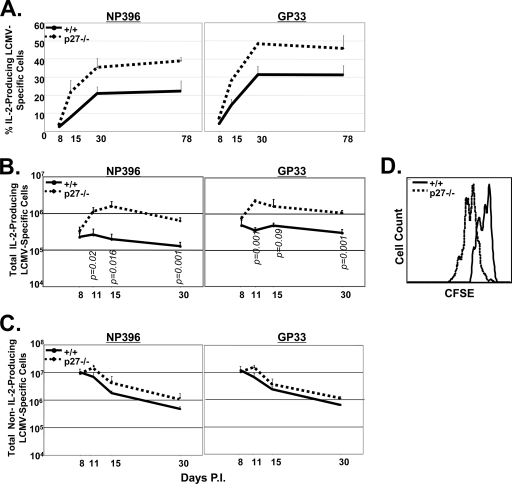FIG. 7.
Preferential expansion and maintenance of IL-2-producing CD8 T cells in p27Kip1-deficient mice. Groups of +/+ and −/− mice were infected with LCMV, and at the indicated number of days after infection, splenocytes were stimulated in vitro with NP396 or GP33 peptides for 5 h. After stimulation, cells were stained for surface CD8 and intracellular IFN-γ and IL-2. Panel A shows the percentage of IL-2-producing cells among NP396- and GP33-specific IFN-γ-producing cells at the indicated days p.i. (B) The line graph shows the total number of IL-2-producing NP396- or GP33-specific CD8 T cells. (C) Line graphs depicting the total number of non-IL-2-producing NP396- and GP33-specific CD8 T cells. (D) Proliferative expansion of IL-2-producing NP396-specific CD8 T cells in an antigen-free environment. At day 8 p.i., CD44high CD8 T cells sorted from the spleens of +/+ or −/− mice were labeled with CFSE and adoptively transferred into naïve congenic B6/Ly5.1 mice. Eight days after cell transfer, splenocytes from the recipient mice were stimulated with NP396 peptide to induce cytokine production. After culture, cells were stained for cell surface Ly5.2 and CD8 and intracellular IL-2. The histograms show CFSE fluorescence and are gated on IL-2-producing, donor NP396-specific CD8 T cells.

